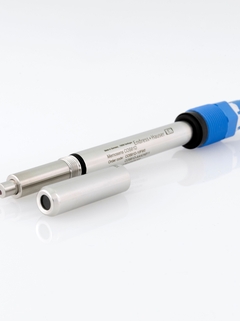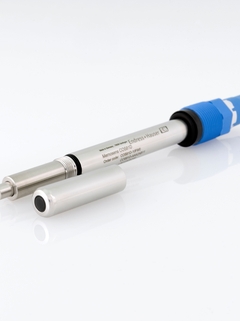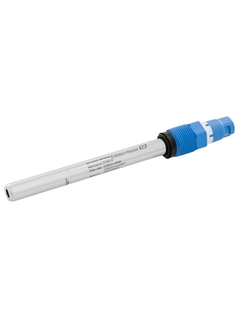COS81D Digital oxygen sensor Memosens
Field of application
Memosens COS81D is the ideal oxygen sensor for hygienic applications such as fermentation and inertization. Its precise, long-term stable measurements and its permanent self-monitoring ensure the most reliable measured values to help meet your desired product quality and optimize product yield. Memosens COS81D is not the latest Memosens generation. To get information on the new Memosens COS81E sensor with extended functionality, click here.
Memosens COS81D measures oxygen in applications with high demands to sterility and hygiene such as:
-
Fermentation
-
Inertization
-
Drinking water production
With its international explosion protection approvals, such as ATEX and IECEx, the Memosens COS81D oxygen sensor is suitable for hazardous area use.
A pharma certificate of compliance with sensor serial number specified is available.
Benefits
-
Hygienic design according to EHEDG and ASME BPE (incl. USP class VI and FDA compliance) avoids cross-contamination and fulfills all GMP and GLP requirements.
-
The sensor can be used in process applications as well as benchtop fermenters. Providing you with 100% measuring consistency from the first lab trials to the final scaled-up process and your process lab.
-
More process up-time than ever before thanks to sensor exchange within seconds: precalibrate the sensor in your lab and then swap it into your process with plug & play. It does not need polarization time and is immediately ready to measure.
-
A built-in reference LED compensates the ageing of the measuring LED. This ensures reliable measured values throughout your entire batch production.
-
Reduce your maintenance effort: Memosens COS81D does not have a difficult-to-handle electrolyte or sensitive membrane. Just exchange the sensor cap, perform a calibration and you are done.
-
Memosens COS81D stores important sensor and process data in its intelligent head. The Memobase Plus CYZ71D sensor management software can use all this data to document the complete sensor lifetime offering full traceability with minimal paperwork.
-
Suitable for CIP/SIP and autoclaving and approved for hazardous area use.
Videos
-
Measuring principle
Optical oxygen measurement
-
Application
Process control in enzyme production, control of culture growth, biotechnology, food industry, general process applications
-
Installation
Standard process connection Pg 13.5
Installation in standard pH assemblies possible -
Characteristic
Hygienic, optical sensor for stable oxygen measurement over multiple sterilization cycles
Measurement possible in still water -
Measurement range
0.004 to 30 mg/l
0.05 to 330 %SAT
0.1 to 700 hPa -
Measuring principle
Oxygen-sensitive molecules (marker) are integrated in an optical active layer (fluorescence layer). The fluorescence layer surface is in contact with the medium. The sensor optics are directed at the back of the fluorescence layer. The sensor optics transmit green light pulses to the fluorescence layer. The markers respond (fluoresce) with red light pulses. The duration and intensity of the response signals depend directly on the oxygen contents or partial pressure.
-
Design
Optical System, stainless steel
-
Material
Sensor shaft: stainless steel 1.4435
Process seal: FKM (USP <87>, <88> Class VI and FDA)
Seal/O-rings: EPDM, FFKM (USP <87>, <88> Class VI and FDA) -
Dimension
Diameter: 12 mm (0.47 inch)
Shaft length: 120, 220, 360 and 420 mm
(4.72, 8.66, 14.2 and 16.5 inch) -
Process temperature
0 to 140 °C
(32 to 284 °F) -
Process pressure
0.02 to 13 bar abs
(0 to 190 psi) -
Temperature sensor
Pt1000 (Class A according to DIN IEC 60751)
-
Connection
Memosens-connection head
-
Additional certifications
Material certification 3.1
ASME BPE-2016
Regulation (EC) No. 1935/2004













